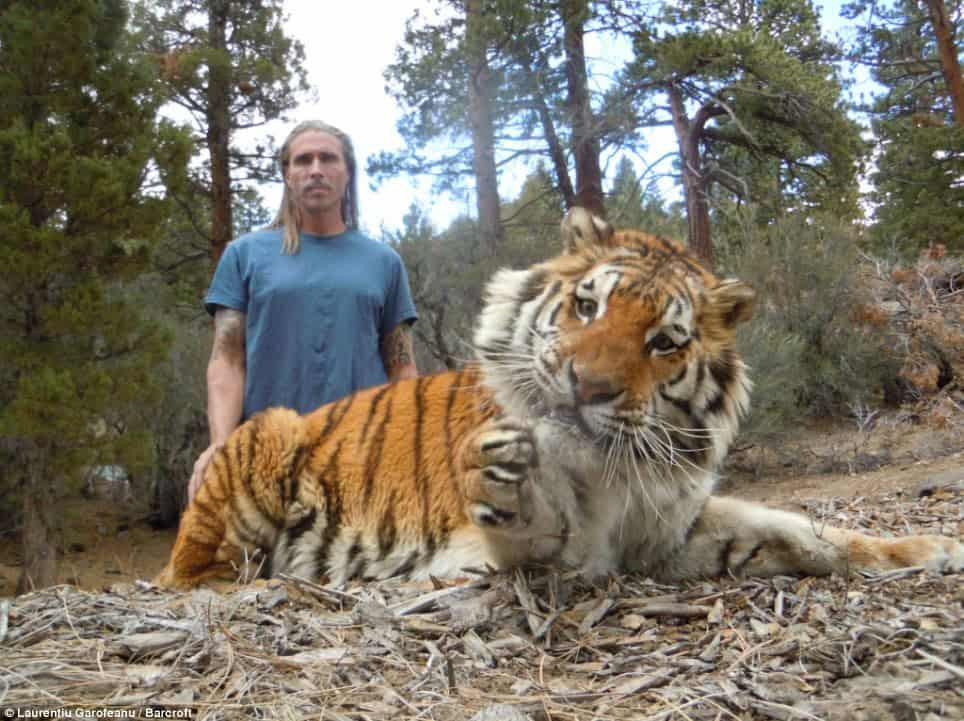A Thrilling Spectacle That Divides Audiences
In the world of entertainment, few acts spark more fascination, or controversy, than staged tiger attacks. The image is powerful: a massive tiger roaring, muscles coiled, appearing ready to strike. To spectators, it looks dangerously real. But behind the drama lies a carefully crafted illusion.
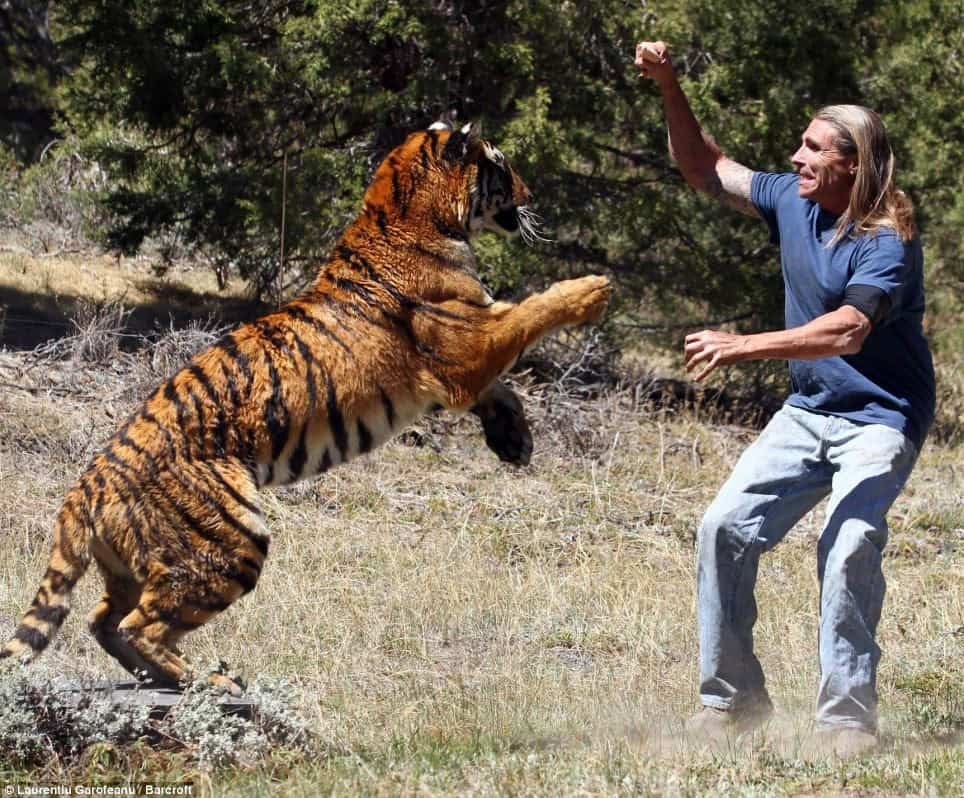
The Choreography Behind the “Attack”
While the performance mimics wild aggression, it is anything but spontaneous. Trainers invest countless hours building trust with their big cats, using positive reinforcement to teach specific cues that resemble threatening behavior.
These trained cues often include:
- Controlled growls
- A gentle paw swipe
- A rehearsed mock charge
Each movement is choreographed to look intense while remaining within the boundaries of a practiced routine.
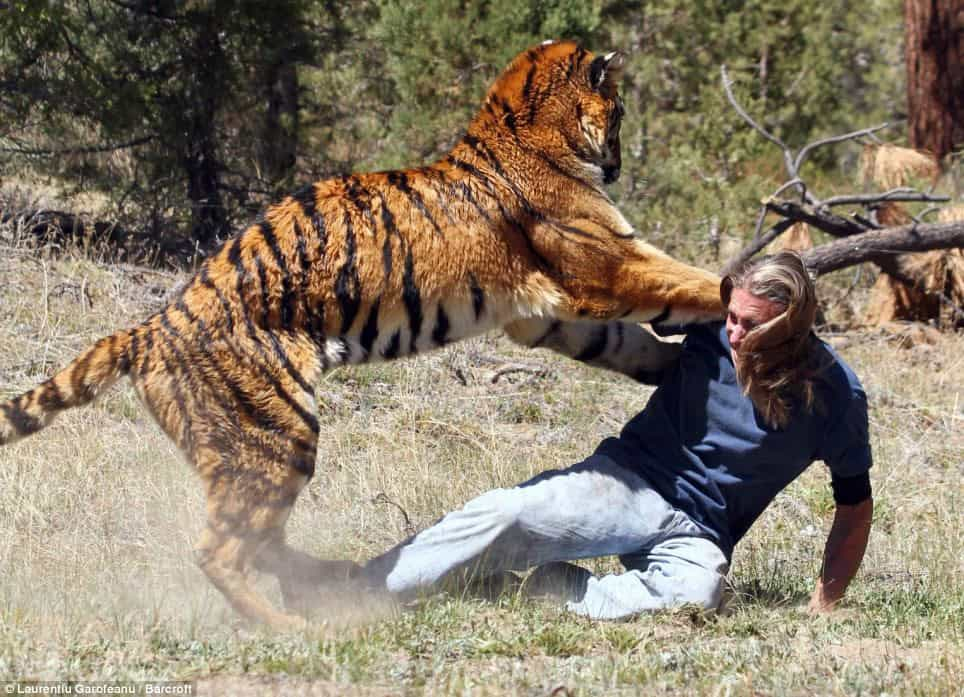
Trust, Training, and Positive Reinforcement
The foundation of every staged tiger performance is the relationship between the trainer and the animal. Rather than force, trainers rely on rewards – treats, praise, or affection – to guide behavior.

Tigers perform voluntarily, responding to signals they know and understand. The goal: create excitement without causing harm.
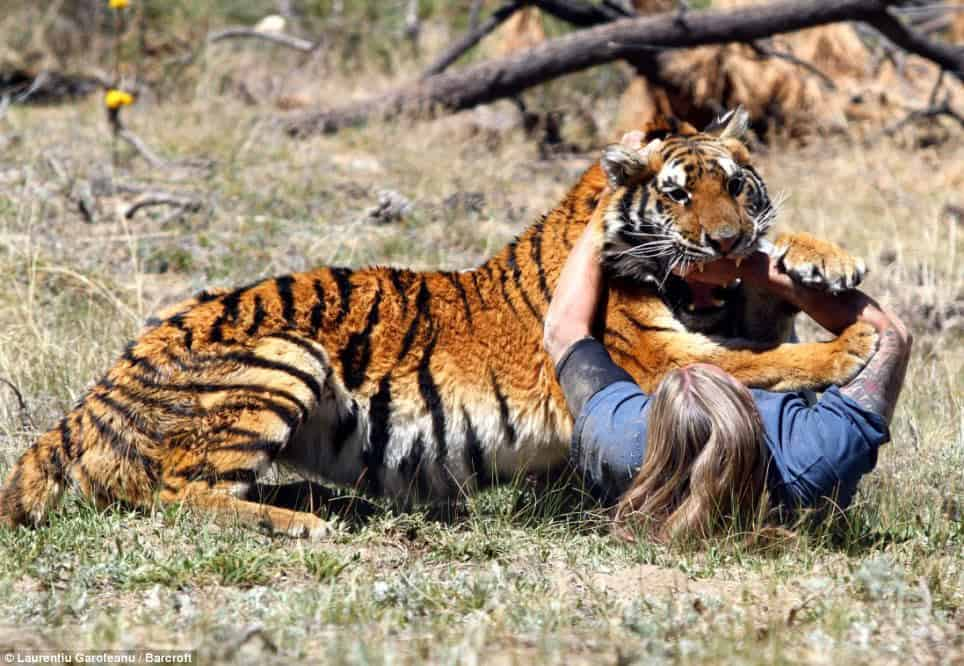
Safety Measures Behind the Scenes
Although the performance is staged, safety remains paramount. Trainers rely on:
- Protective gear
- Hidden barriers
- Emergency protocols
- Close supervision
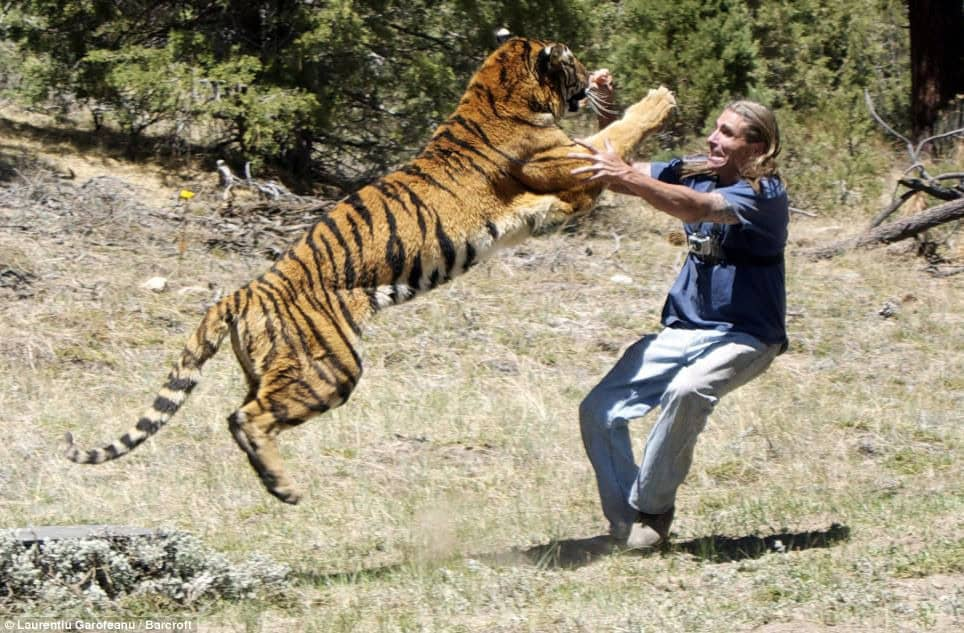
These precautions minimize risks, but they cannot eliminate them. Tigers are still powerful predators, and even small missteps can lead to serious danger.

Acknowledging the Risks and Responsibilities
Despite careful preparation, staged tiger acts remain inherently risky. Experienced trainers understand this and approach each performance with respect for the animal’s nature.
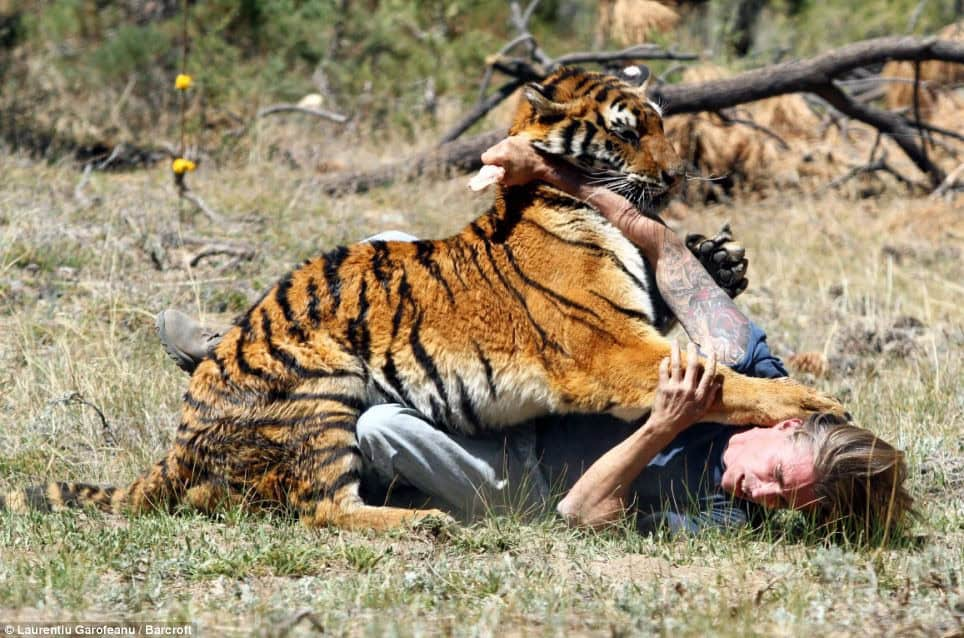
Audiences, too, must recognize that these acts, though thrilling, require deep expertise and a commitment to safety.
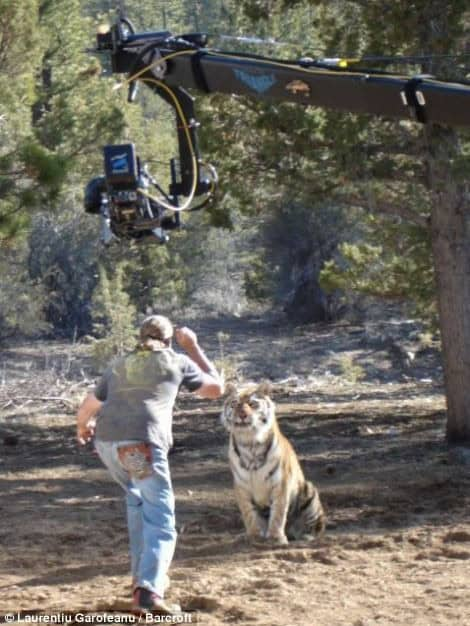
A Controlled Illusion, Not True Aggression
Ultimately, staged tiger attacks are artistic performances rather than displays of actual wild behavior. They blend training, trust, and precise choreography to create a spectacle that appears dangerous while remaining as controlled as possible.

Respecting the Animals Behind the Show
As spectators, it’s important not only to admire the skill of the trainers but also to appreciate the beauty and complexity of the animals involved. Advocating for their welfare and humane treatment ensures these magnificent creatures are respected both on and off the stage.
